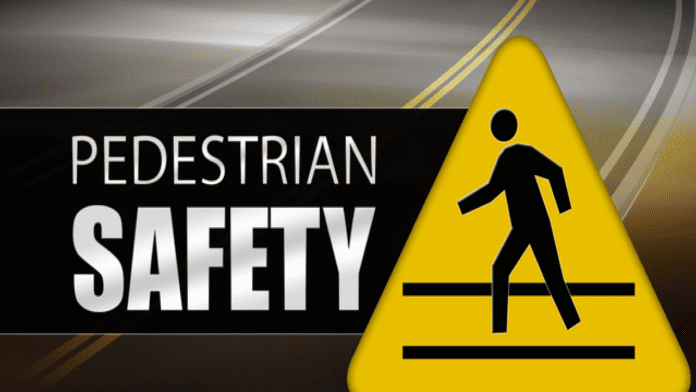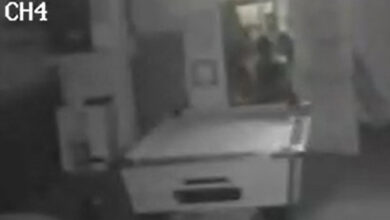October is National Pedestrian Safety Month

October is National Pedestrian Safety Month, and AAA Western and Central New York is reminding both drivers and pedestrians of their responsibilities by sharing key safety measures to protect roadway users.
The Federal Highway Administration has made strides to increase pedestrian safety with infrastructure improvements, including more medians and redesigned roads for better pedestrian/bicycle traffic flow. Yet, pedestrian fatalities are still a major concern today.
The latest numbers from National Highway Traffic Safety Administration (NHTSA) show that 6,205 pedestrians were killed in 2019, that’s a pedestrian fatality every 85 minutes. Following basic safety guidelines and avoiding distractions can go a long way in reducing those numbers.
Tips for parents and children
Parents, walking your children to school, to the park, or through the neighborhood provides opportunities to teach them important pedestrian safety practices and the rules of the road. Some key points to help keep children safe:
•Look left, look right, and look left again. Stop in a safe place before entering a roadway and practice looking both ways before crossing the street.
•Make eye contact with drivers. Never assume the driver has seen you. This allows the driver a chance to acknowledge children and let them pass or provides children the opportunity to wait if the driver has not seen them.
•Make eye contact with bus drivers. When exiting or approaching a school bus, make eye contact with the bus driver and wait for acknowledgment before crossing in front. Always maintain at least 10 feet from the front, back, and sides of the bus.
•Use your eyes and ears. Your vision and hearing work together, providing the best defense for safety. Do not use headphones or play with handheld devices when crossing the street.
•Don’t walk on the road. Whenever possible, stay on sidewalks and use marked crosswalks.
•Never run out into the street. Regardless of what you are chasing after, you must follow all the rules of crossing the street in order to retrieve it. Be sure to look left, right, and left again before entering the roadway.
Tips for all pedestrians
•Be visible. This is especially important in dark places or poor weather. Remember to stay in well-lit areas and to wear light or reflective clothing. Never assume drivers see you just because you see them.
•Use sidewalks and pathways. If a sidewalk is not available, stay to the far side of the road and always face traffic.
•Beware of multiple cars. Because a driver lets you pass, it does not necessarily mean other drivers are aware that you are crossing.
•Plan your route. This can help you avoid any hazardous crossings or busy streets during times of heavy traffic.
•Always look both ways. Even at a crosswalk and allow yourself enough time to cross the street.
•Wait it out. If a walk sign has been lit for a while or the caution sign has begun to blink, it is wise to wait for a new green signal to have the maximum time to cross the street.
•Be aware and alert. Not all drivers will follow pedestrian traffic rules or signs. Always be aware of vehicles that are around you so you may take control of your own safety.
Tips for drivers
•Be alert. Look out for pedestrians at all times. Often, pedestrians – especially younger ones – are not where they should be or where you would expect them to be. Remain vigilant at all times.
•Always follow posted speed limits. Especially in areas of heavy pedestrian traffic and in areas that have lower speed limits, such as school zones and neighborhood streets where pedestrians may appear suddenly.
•Stay alert – avoid distractions. Put down your phone. Smartphones and handheld electronic devices take your eyes off of the road and distract your attention.
•Ensure visibility. Overall visibility is limited in bad weather conditions and poorly lit areas. Make sure your lights are on and you use your signals properly. Use extra caution in these circumstances. Not only is it more difficult for drivers to see oncoming pedestrians, but it also is harder for pedestrians to see you.
•Be extra vigilant in driveways. Be mindful of pedestrians when pulling into and out of driveways – especially if you are backing up. Pedestrians can easily enter your path without your knowledge.
•Always yield to pedestrians in a crosswalk. When approaching a crosswalk, reduce your speed, be prepared to stop, and allow enough room between your vehicle and the crosswalk so other drivers can see the pedestrians.
•Do not pass vehicles stopped at a crosswalk. They have stopped to allow pedestrians to pass or make sure the way is clear.
Provided information





